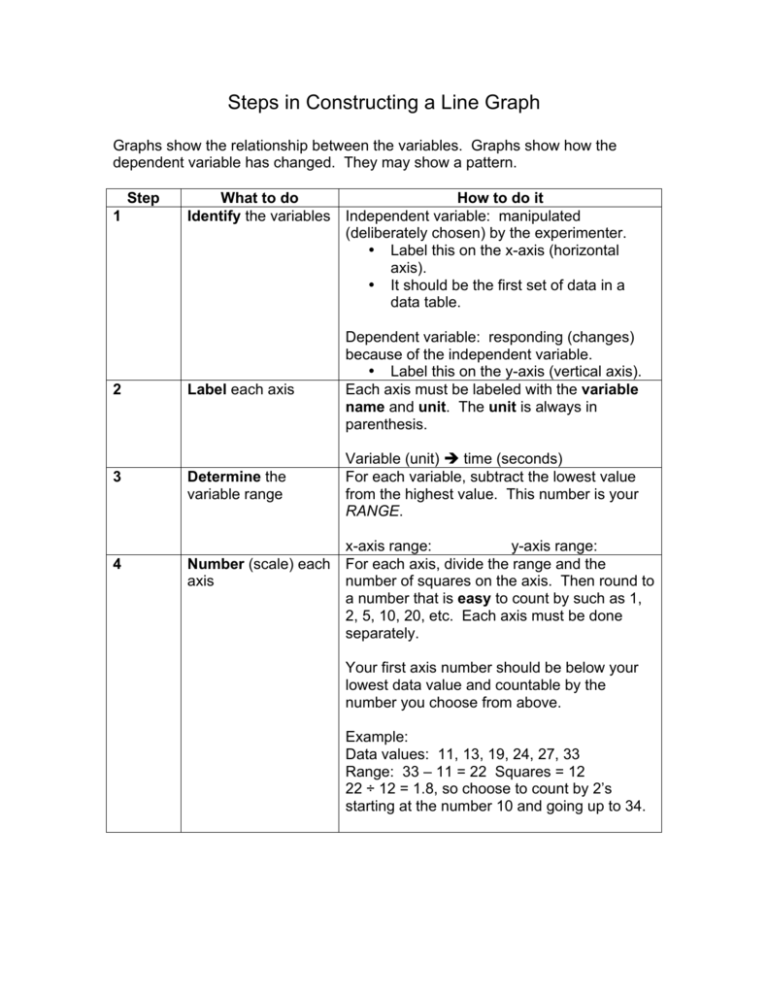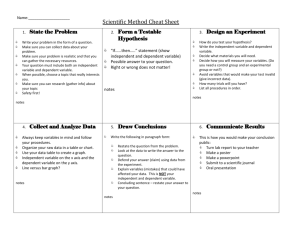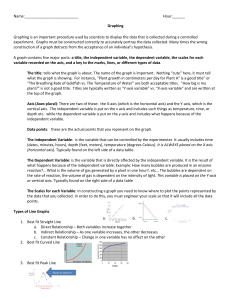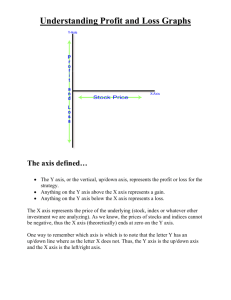Constructing Line Graphs: A Step-by-Step Guide
advertisement

Steps in Constructing a Line Graph Graphs show the relationship between the variables. Graphs show how the dependent variable has changed. They may show a pattern. Step 1 2 3 4 What to do How to do it Identify the variables Independent variable: manipulated (deliberately chosen) by the experimenter. • Label this on the x-axis (horizontal axis). • It should be the first set of data in a data table. Label each axis Determine the variable range Dependent variable: responding (changes) because of the independent variable. • Label this on the y-axis (vertical axis). Each axis must be labeled with the variable name and unit. The unit is always in parenthesis. Variable (unit) time (seconds) For each variable, subtract the lowest value from the highest value. This number is your RANGE. x-axis range: y-axis range: Number (scale) each For each axis, divide the range and the axis number of squares on the axis. Then round to a number that is easy to count by such as 1, 2, 5, 10, 20, etc. Each axis must be done separately. Your first axis number should be below your lowest data value and countable by the number you choose from above. Example: Data values: 11, 13, 19, 24, 27, 33 Range: 33 – 11 = 22 Squares = 12 22 ÷ 12 = 1.8, so choose to count by 2’s starting at the number 10 and going up to 34. 5 Plot the data points Plot each ordered pair on the graph with a small dot. You numbered your graph correctly if your data points cover more than half of the graph. 6 Draw the line 7 Title the graph 8 Interpret the graph For additional data sets, use another symbol and include a key on the graph. Draw a line or curve connecting the data points. Give your graph a descriptive title using the following format: dependent variable vs. independent variable Child’s Height vs. Child’s Age Describe the relationship between the independent variable and the dependent variable. As the independent variable increases, the dependent variable (increase, decreases, is constant). As the child’s age increases, the child’s height increases. Types of relationships (trend patterns) of line graphs: Direct (positive): As the independent variable increases, the dependent variable increases. Inverse (indirect): As the independent variable increase, the dependent variable decreases. Cyclic: As the independent variable increases, the dependent variable increases & decreases in a regular pattern. Static (constant): As the independent variable increases, the dependent variable stays the same.











